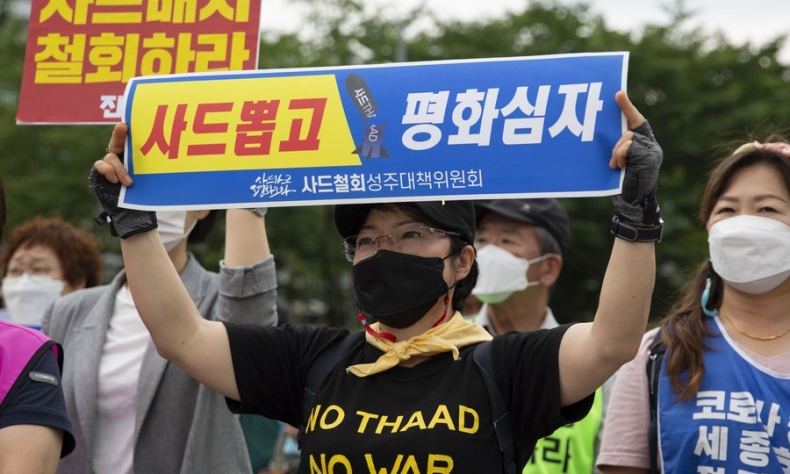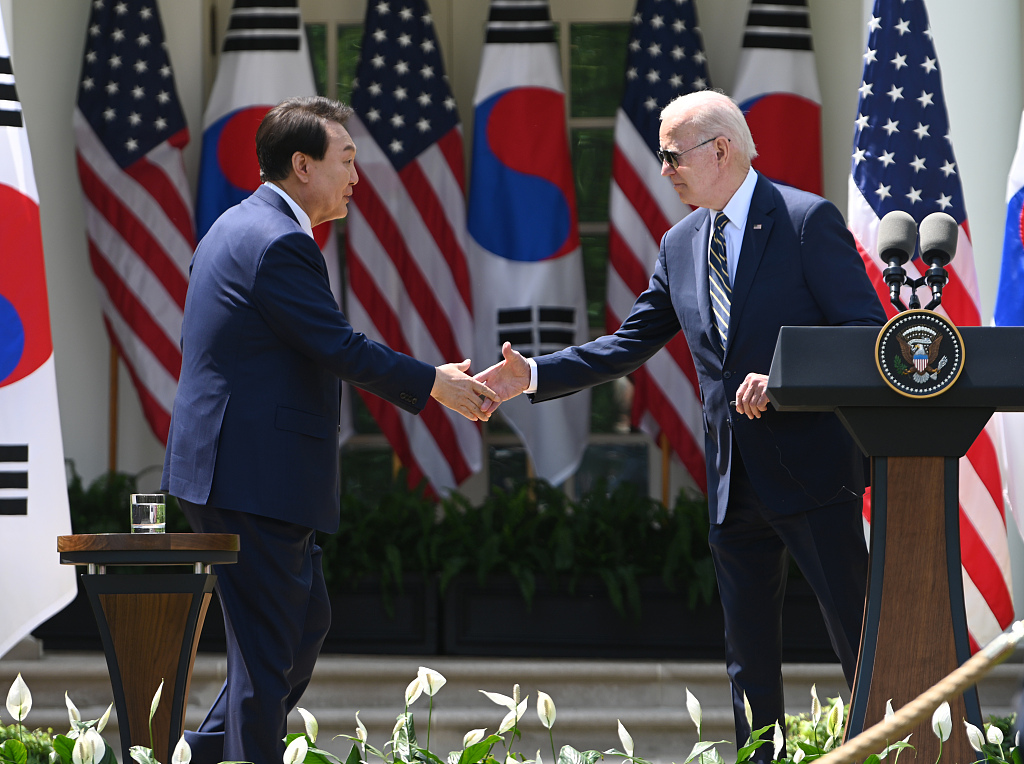Re-Launching THAAD?

Whether it’s China, the ROK or the U.S., all should possess such broad vision: taking a longer-term, wider view of peace and development and thinking about bilateral or multilateral relations from a higher standpoint.
In late June, the government of the Republic of Korea (ROK) completed and approved its environmental impact assessment of the U.S. base of the Terminal High Altitude Area Defense (THAAD) system in Seongju County, North Gyeongsang Province, clearing the way for the system’s permanent deployment at the American military base on the narrow Korean Peninsula.
On July 8, 2016, the U.S. and the ROK issued a joint statement saying that due to “growing threats posed by the Democratic People’s Republic of Korea’s (DPRK) military provocations,” they decided to deploy the THAAD system in Seongju. One of the most advanced anti-missile systems currently in military use, THAAD can intercept ballistic missiles at an altitude of 40 to 180 km, with a defense radius of 200 km. The system’s primary radar—the AN/TPY-2 Surveillance Transportable Radar, is the largest and most powerful road-based mobile radar in the world today. Its actual detection and reconnaissance range are said to reach up to 4,700 km, enough to cover half of the Russian Far East and almost all of China’s territory.
Unsurprisingly, both Russia and China strongly objected to the plan seven years ago, as military experts believed reducing the deterrent capability of Russian and Chinese strategic missiles was the main motive for America’s very active promotion of the THAAD system’s deployment on the peninsula. THAAD further became synonymous with the ROK’s delicate balancing act between its chief ally, the U.S., and its main trading partner and biggest neighbor, China.
The Park Geun-hye administration (2013-17) and the Moon Jae-in administration (2017-22) were both well aware of the pros and cons. For a long time, the country pursued a diplomatic strategy of seeking balance among major powers. In October 2017, then President Moon Jae-in reversed his prior decision and declared not to temporarily install additional elements of the controversial system, while restricting the use of the already deployed THAAD system.
However, the ROK’s balancing act has undergone significant changes since Yoon Suk-yeol assumed office as president in May 2022. The U.S.-ROK alliance is now “stronger than ever,” Yoon told U.S. Congress in a speech celebrating the alliance’s 70th anniversary in April. The Yoon Suk-yeol administration continues to deepen economic and military cooperation with the U.S. and strengthen ties with NATO. In this context, the ROK’s THAAD “re-launch” was to be expected.

Unlike the fierce protests from the highest official to the wider public levels in 2016, China seems to be fully prepared this time around. On the one hand, with the passage of time and the progress of China’s technology, the potential threat THAAD poses to China has been greatly reduced; on the other, the ROK’s security anxiety has seriously deepened after the DPRK in 2022 claimed to have successfully tested hypersonic glide missiles.
The situation in Northeast Asia has been complicated since the Korean War in the early 1950s. Ideological differences between countries, coupled with the continuous intervention of foreign forces led by the U.S., led to heightened tension in the region. In the more than 30 years since China and the ROK officially established diplomatic relations in 1992, both have adhered to the concept of peaceful development, understood the individual development paths they have chosen when managing bilateral relations and, in fact, assumed an important role in stabilizing the regional situation. China does not want the THAAD issue to become a stumbling block in the bilateral relationship, nor does it hope to see regional tensions escalate because of provocative actions from any party involved.
On July 3, Wang Yi, China’s de facto top diplomat who has been serving as director of the Office of the Foreign Affairs Commission of the Communist Party of China Central Committee since January, received an invitation from ROK Foreign Minister Park Jin to climb Bukhansan Mountain, on the northern periphery of Seoul, during the latter’s online speech at the 2023 International Forum for Trilateral Cooperation hosted in Qingdao, Shandong Province. Wang thanked Park and invited him to Shandong to climb Taishan Mountain together. Climbing Taishan Mountain to see the world will broaden our vision and define the direction of our efforts, Wang said.
The legacy of the ancient Chinese sage Confucius (551-479 B.C.) remains a fundamental part of East Asian society to this day. One ancient poem, well-known to the people of both countries, describes Taishan Mountain as follows: “Try to ascend the mountain’s crest; it dwarfs all peaks under our feet.” Whether it’s China, the ROK or the U.S., all should possess such broad vision: taking a longer-term, wider view of peace and development and thinking about bilateral or multilateral relations from a higher standpoint.
 Facebook
Facebook
 Twitter
Twitter
 Linkedin
Linkedin
 Google +
Google +










